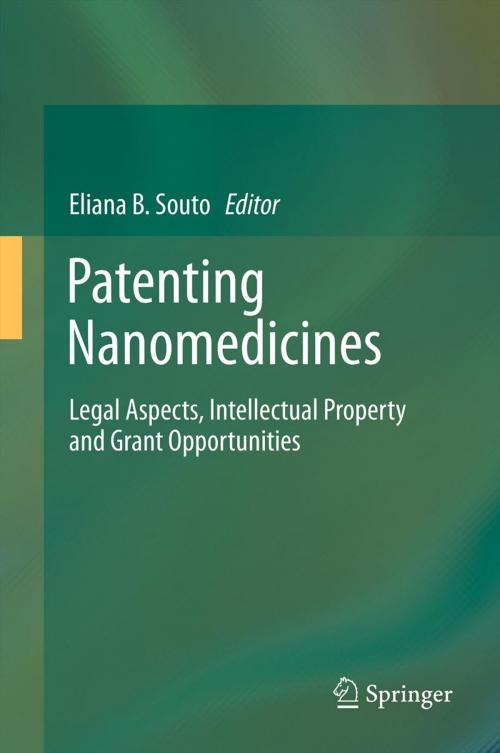Patenting Nanomedicines
Legal Aspects, Intellectual Property and Grant Opportunities
Nonfiction, Health & Well Being, Medical, Reference, Ethics, Reference & Language, Law, International| Author: | ISBN: | 9783642292651 | |
| Publisher: | Springer Berlin Heidelberg | Publication: | July 6, 2012 |
| Imprint: | Springer | Language: | English |
| Author: | |
| ISBN: | 9783642292651 |
| Publisher: | Springer Berlin Heidelberg |
| Publication: | July 6, 2012 |
| Imprint: | Springer |
| Language: | English |
“Patenting Nanomedicines: Legal Aspects, Intellectual Property and Grant Opportunities” focusses on the fundamental aspects of Patenting Nanomedicines applied in different “Drug Delivery and Targeting Systems”. The promoters of new findings in this field of research are numerous and spread worldwide; therefore, managing intellectual property portfolios, and the acquisition and exploitation of new knowledge face several contingency factors. Today, the scientific community is discussing issues of economic outcomes in the field of Nanomedicines. Major concerns include questions as to whether the research groups, academics, industry and other stakeholders should work in unison or independently, if innovation or adaptation of new technology should be prioritized, public versus private research funding, and safeguarding versus sharing knowledge. However, despite its increasing importance for humankind, it is a matter of concern as to whether technological development can really be stimulated by patent protection. An intellectual property strategy should aim to develop a qualitative patent portfolio for continuous learning.
This book addresses questions of ethics, socio-political policies and regulatory aspects of novel Nanomedicine-based products which are currently under development for the diagnosis and treatment of different types of diseases. It is divided in two parts – Part I is composed of the first 3 chapters, which focus on the “fundamentals” of legal aspects, emerging threats, advantages and disadvantages of patenting Nanomedicines, whereas Part II collects 12 chapters discussing different types of Nanomedicine-based products, their potential marketing aspects and patent protection. Whenever applied, each chapter offers a list of patents, based on a specific application in drug delivery and targeting. An outstanding team of 53 authors have contributed to this book, which will be of interest to professionals from the field of patent examiners, academics, researchers and scientists, students and other practitioners.
“Patenting Nanomedicines: Legal Aspects, Intellectual Property and Grant Opportunities” focusses on the fundamental aspects of Patenting Nanomedicines applied in different “Drug Delivery and Targeting Systems”. The promoters of new findings in this field of research are numerous and spread worldwide; therefore, managing intellectual property portfolios, and the acquisition and exploitation of new knowledge face several contingency factors. Today, the scientific community is discussing issues of economic outcomes in the field of Nanomedicines. Major concerns include questions as to whether the research groups, academics, industry and other stakeholders should work in unison or independently, if innovation or adaptation of new technology should be prioritized, public versus private research funding, and safeguarding versus sharing knowledge. However, despite its increasing importance for humankind, it is a matter of concern as to whether technological development can really be stimulated by patent protection. An intellectual property strategy should aim to develop a qualitative patent portfolio for continuous learning.
This book addresses questions of ethics, socio-political policies and regulatory aspects of novel Nanomedicine-based products which are currently under development for the diagnosis and treatment of different types of diseases. It is divided in two parts – Part I is composed of the first 3 chapters, which focus on the “fundamentals” of legal aspects, emerging threats, advantages and disadvantages of patenting Nanomedicines, whereas Part II collects 12 chapters discussing different types of Nanomedicine-based products, their potential marketing aspects and patent protection. Whenever applied, each chapter offers a list of patents, based on a specific application in drug delivery and targeting. An outstanding team of 53 authors have contributed to this book, which will be of interest to professionals from the field of patent examiners, academics, researchers and scientists, students and other practitioners.















